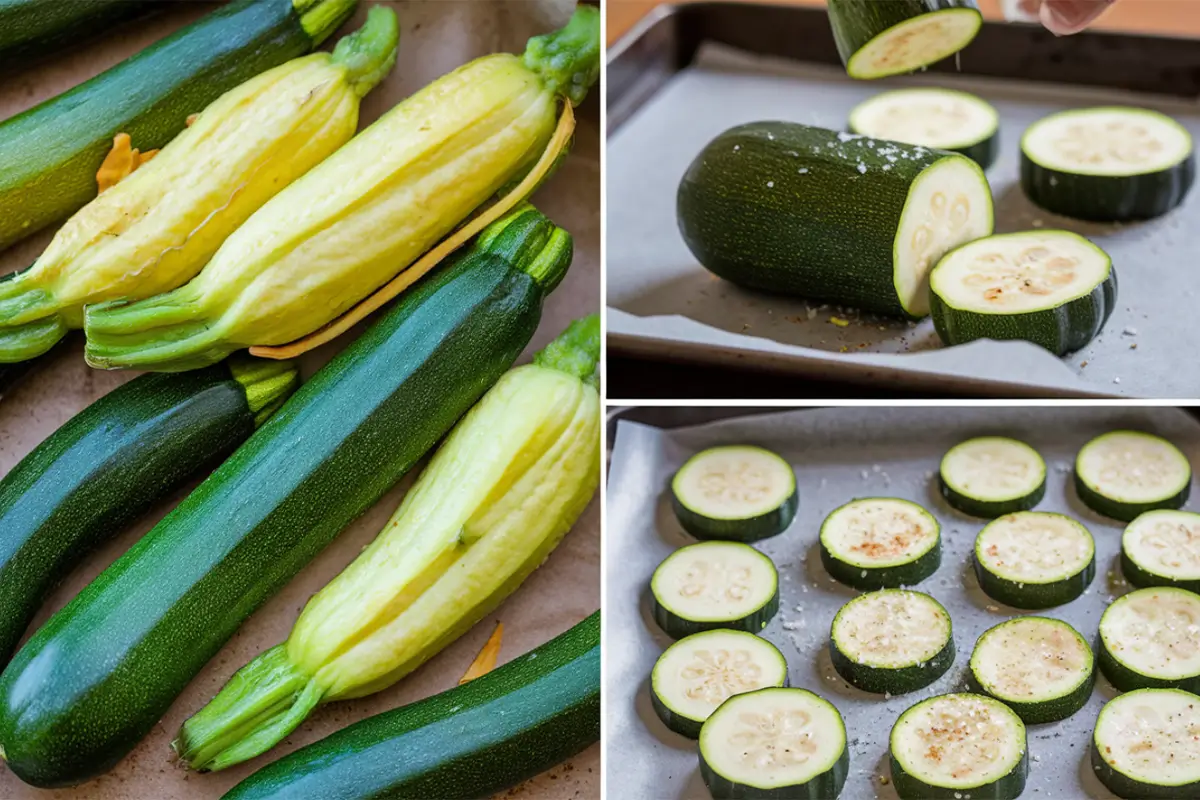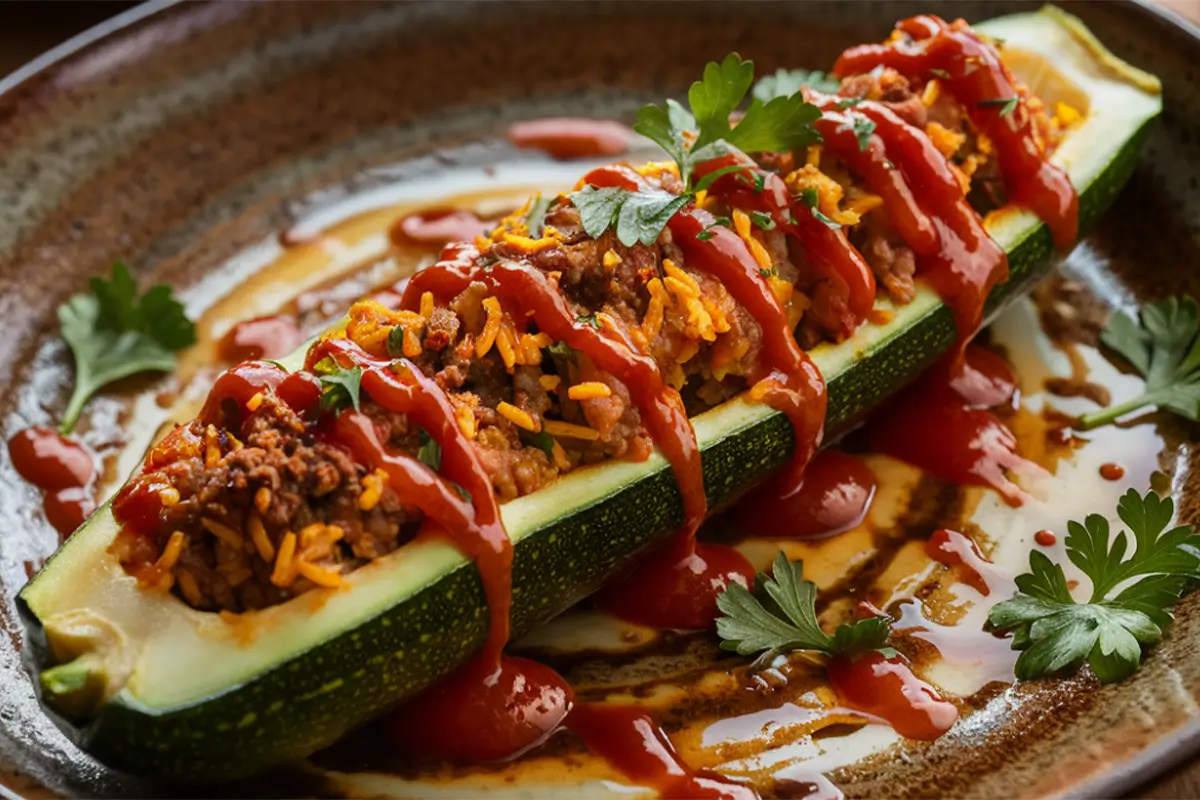Understanding the Differences Between Zucchini and Lebanese Zucchini (Kousa)
Zucchini, a well-loved summer squash, comes in different forms, each offering unique characteristics. Two commonly compared types are the standard green zucchini and Lebanese zucchini, also known as Kousa. Although these varieties share similarities, they differ significantly in appearance, flavor, culinary uses, and cultural importance. This article breaks down these differences, providing insights into how and when to use each variety.
Appearance and Size
The differences between standard zucchini and Lebanese zucchini are noticeable in their appearance. Standard zucchini typically features dark green, smooth skin and an elongated shape. Farmers usually harvest it when it reaches 6 to 8 inches, although it can grow larger. The flesh is firm and pale green, making it versatile for many culinary uses.
Lebanese zucchini, or Kousa, is smaller, typically about 4 to 6 inches long. It has pale green skin that is thinner and often shows subtle ridges. The smaller size and delicate skin make Kousa ideal for stuffing dishes, such as the traditional Middle Eastern Kousa Mahshi.
These differences in size and appearance directly impact their culinary applications. The larger size of standard zucchini suits slicing, dicing, or spiralizing into noodles. On the other hand, Lebanese zucchini’s smaller, more delicate structure works best in recipes where it needs to hold a filling or cook quickly.
Flavor and Texture
The flavor and texture of these zucchinis also differ significantly. Standard zucchini has a mild, slightly sweet flavor with a firm texture that withstands various cooking methods. This firmness makes it suitable for grilling, sautéing, baking, or eating raw in salads. Its ability to retain texture makes it reliable for dishes like grilled zucchini or vegetable medleys.
Lebanese zucchini offers a more tender and delicate texture. Its creamy, less fibrous flesh absorbs flavors more easily. This quality makes Lebanese zucchini perfect for stuffed dishes like Kousa Mahshi, where the zucchini is filled with rice, meat, and spices. The tender Kousa cooks evenly, blending well with other ingredients to create a harmonious flavor.
Lebanese zucchini also cooks faster than standard zucchini. This quick cooking time makes it ideal for dishes where the zucchini needs to be soft and pliable, such as in stews or as a filling for delicate pastries.
Culinary Applications
The distinct characteristics of standard zucchini and Lebanese zucchini influence their culinary uses. Standard zucchini’s versatility makes it a staple in many kitchens, especially in Western cuisine. It can be grilled, roasted, sautéed, baked into bread, or eaten raw in salads. Its ability to retain shape and texture under various cooking methods makes it a go-to ingredient for many recipes, from ratatouille to zucchini noodles.
Lebanese zucchini, with its tender texture and mild flavor, plays a crucial role in Middle Eastern cuisine. The most famous dish using Kousa is Kousa Mahshi. In this dish, the zucchini is hollowed out, stuffed with rice, ground meat, and spices, and simmered in a tomato-based sauce. The tender flesh of Lebanese zucchini absorbs the flavors of the filling and sauce, resulting in a rich and satisfying dish.
Lebanese zucchini also works well in other traditional dishes, such as stews and soups. Its delicate texture and mild flavor enhance the overall dish without overpowering it. Its small size makes it perfect for serving as individual portions, adding to its appeal in home cooking and professional kitchens.
Nutritional Benefits
Both standard zucchini and Lebanese zucchini offer nutritional benefits, making them excellent choices for a healthy diet. Both types are low in calories and rich in essential vitamins and minerals, such as vitamin C, potassium, and manganese. These nutrients contribute to overall health, boosting the immune system, supporting heart health, and improving skin condition.
Lebanese zucchini has a slight edge in water content, which adds to its tender texture. This higher water content makes Kousa a hydrating food, particularly refreshing in hot climates or during the summer. The differences in nutritional profiles between these two types do not significantly impact their health benefits but do influence the texture and mouthfeel of the dishes they are used in.
Cultural and Historical Significance
The cultural significance of these zucchinis varies. Standard zucchini, often called courgette in Europe, is widely recognized in Western cuisine. It originated in Central America but developed into its modern form in Italy during the 19th century. Zucchini became popular in the United States in the 20th century and has since become a staple in American kitchens, celebrated for its versatility and ease of cultivation.
Lebanese zucchini, or Kousa, holds a deep history in Middle Eastern cuisine, particularly in Lebanon, Syria, and surrounding regions. Stuffing vegetables, especially zucchinis, is a time-honored tradition in these cultures, symbolizing hospitality and culinary skill. Families often prepare dishes like Kousa Mahshi for gatherings, religious festivals, and special occasions. The act of stuffing and cooking the zucchini is as much a social activity as a culinary one.
Kousa also carries deep cultural significance, symbolizing Middle Eastern culinary heritage. Families pass down recipes for generations, with each family adding their unique twist. While regular zucchini is popular in many cultures, it does not hold the same deep cultural and familial significance as Lebanese zucchini does in Middle Eastern societies.

Growing Conditions and Harvesting
Both types of zucchini thrive in warm, sunny climates with well-drained soil. However, their cultivation practices reflect their unique characteristics. Standard zucchini plants spread out more and produce larger fruits, typically harvested when they reach 6 to 8 inches in length. These plants are prolific producers, often yielding more zucchini than a family can consume in a single season.
Lebanese zucchini plants are more compact and produce smaller fruits. The smaller size of the fruits makes them easier to manage in smaller gardens or containers, which is particularly advantageous for home gardeners with limited space. Farmers typically harvest Kousa when the fruits are about 4 to 6 inches long, ensuring they are tender and flavorful.
Both zucchinis are planted in late spring and harvested throughout the summer. However, Lebanese zucchini may be harvested earlier due to its smaller size and faster growth rate. This makes it a desirable option for those looking to enjoy fresh zucchini earlier in the summer.
Choosing the Right Zucchini for Your Dish
When choosing which zucchini to use, consider the dish you are preparing and the qualities you need. If you require a versatile ingredient for various cooking methods, standard zucchini is the better choice. Its firm texture and larger size make it ideal for grilling, roasting, and spiralizing, providing substance and structure to your dishes.
If you are preparing a dish where the zucchini needs to blend seamlessly with other ingredients or making a traditional Middle Eastern recipe like Kousa Mahshi, Lebanese zucchini is perfect. Its tender flesh and smaller size make it ideal for stuffing and slow-cooking, absorbing flavors and softening to create a melt-in-the-mouth texture.
For those exploring Middle Eastern culinary traditions, Lebanese zucchini offers a more authentic experience. It is a key ingredient in many traditional dishes, bringing a unique flavor and texture that regular zucchini may not provide.
Conclusion
Understanding the differences between standard zucchini and Lebanese zucchini enhances your cooking and helps you choose the best type for your dishes. Standard zucchini offers versatility and a firm texture suitable for a wide range of recipes. Meanwhile, Lebanese zucchini provides a tender, delicate texture perfect for stuffing and slow-cooking.
Both types of zucchini have their place in the kitchen. Their differences in appearance, flavor, and culinary uses reflect the diverse ways they can be enjoyed. Whether grilling zucchini for a summer barbecue or preparing a traditional Kousa Mahshi for a family gathering, knowing which zucchini to use makes all the difference in achieving the best results.

